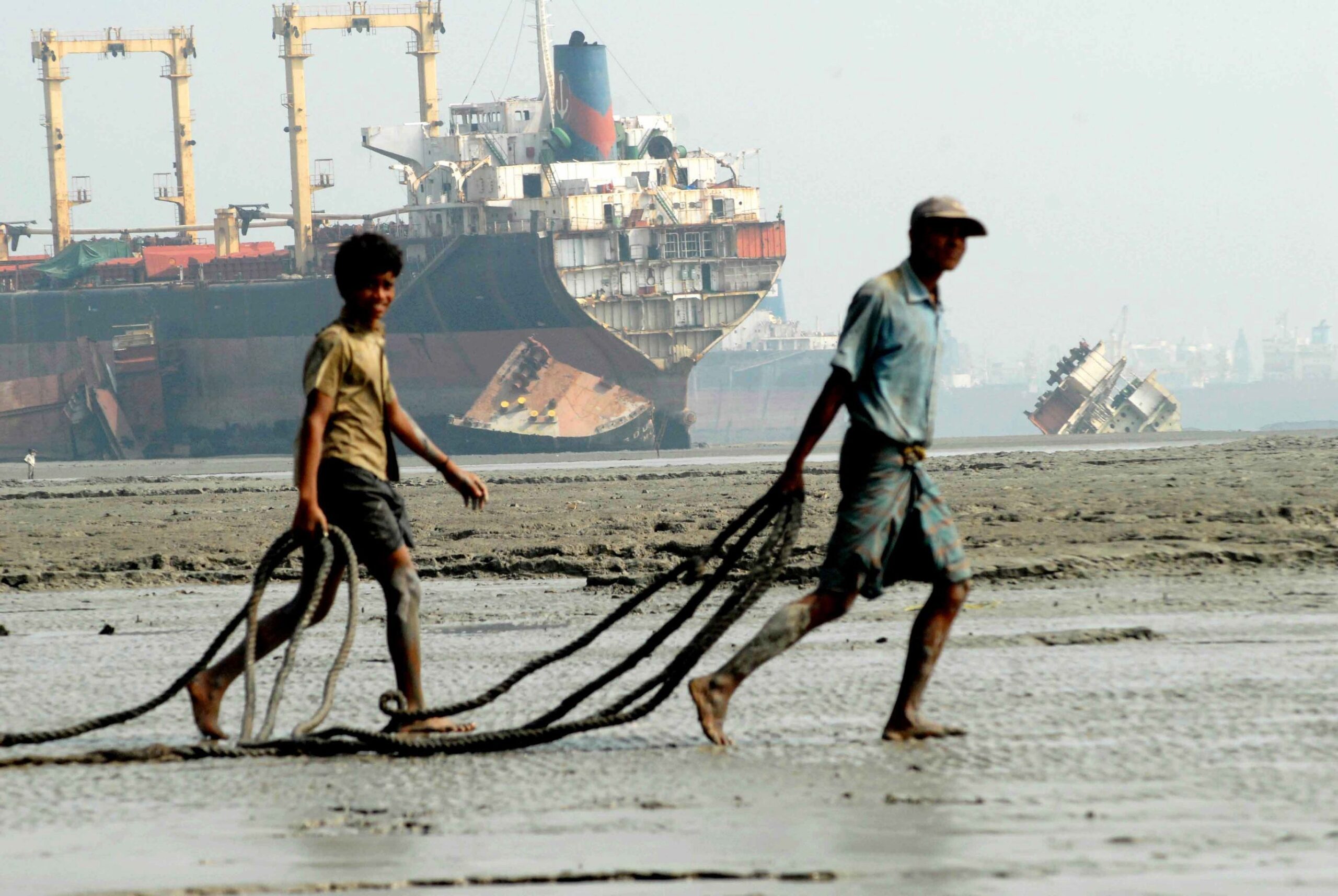A breathtaking drama of destruction and rebirth unfolds on the dark "Shipbreaking - Yards" Here, disused ships reach our bananas and clothes around the world as a mega ferrenter drove their sad end, while fake certificates and undiscovered toxins reveal the dark secrets of this industry. But that's just the beginning.
In Bangladesh, around 800 ocean giants are dismantled and “recycled” every year, a haunting sight that reveals the fragility of our environment and the depths of humanity.
In a scenery characterized by hardness and deprivation workers work with bare hands and simplest tools on the huge ships. Most come from rural areas in the north of the country and travel to Chittagong alone to send the hard -earned money to their families. Under extremely low wages and dangerous conditions, often without any protective clothing, they jeopardize their lives. The ship walls are cut with welding burners, crushed, fall down and are led away at low tide. The dangers lurk: workers can slip, injure themselves on sharp edges or to be hit by falling parts. Gas explosions threaten in the depths of the ships. According to statistics, at least one person loses his life every week, but the number of unreported cases is probably far higher, since many workers - including children and adolescents - die from poisoning or infections. They are at the mercy of the dangerous vapors and substances. The surroundings of the "Shippreaking Yards" are contaminated by a lack of safety precautions: toxic substances are often immediately removed and polluted the beach and sediments. In addition, floors and groundwater suffer strongly because the pollutants are flushed in the interior of the tides. Only a few shipyards have collecting systems to bind mineral oil, heavy metals and asbestos and dispose of them on site.
Without adequate facilities for storage and disposal of hazardous waste in the Chittagong region, the toxins from the dismantled ships are simply dumped into the second-hand market, resold or resold to international and domestic buyers. These uncontrolled practices cause additional harm to surrounding communities that are already suffering the effects. The old steel is used to build bridges and buildings. On the other hand, the fact that 95% of a ship is recycled implies a “green cycle”: furniture and old oil are pumped out, removed and resold. But the side effects for the environment and the population are serious.
The costs and benefits are unevenly distributed. Traces of oil and asbestos dust do not reach Europe's beaches. And as long as that remains the case, there will be no interest in finding a fairer solution. The price for the “Western” consumption model, which is based on unlimited availability, is paid by the countries of the global south, which have no real choice as to whether they want to participate in this trade or not.
The companies that benefit from the abortion through low disposal costs try to shield their coastal areas through goals and walls. Human rights activists are committed to improved working conditions in the "Shipbreaking Yards". The documentaries "Eisenfresser" and "toxic tanker scrap for Bangladesh" shed light on the problems and the participation of German shipping companies.
The re -flag is a central method for the circumvention of legal regulations in ship recycling. European shipping companies let their ships ride under foreign flags, often from non-EU countries, to avoid the strict EU regulations. These "cheap flags" often come from Caribbean island states such as St. Kitts and Nevis. Through this practice, the shipping companies save the costs of a non -regulation scrapping, pay taxes to the flag states and avoid the regulations for ship recycling.
The effects are alarming: the reflagging of ships outside the EU is widespread, so that in 2007 around half of the ships of European shipping companies were sailing under non-European flags. The environment near the beach wharves will also be permanently damaged. To expand the shipyards, mangrove forests are often cut down to free the beach for ship skeletons. The toxic substances from the ships, which seep unhindered into the sand, also destroy the local biodiversity. The pollution is even visible on satellite images. In Chittagong, the largest ship-breaking yard in Bangladesh, traces of oil stretch for kilometers into the Gulf of Bengal, the effects of which on the sea can only be imagined. The operators of the ships benefit from the low disposal costs, while the employees and the environment in the global south have to bear the negative consequences. At the same time, the economic benefits of scrapping cannot be ignored. Bangladesh is largely dependent on the steel “obtained” through scrapping
And until this unfortunate reality changes, we will not only be concealing the true costs of our consumer habits, but we will also be sacrificing countless lives at the altar of profit and convenience. The dark shadows of the Shipbreaking Yards will continue to roam the innocent lives on the fringes of society as we turn a blind eye on our home turf to the devastation our consumer choices cause elsewhere. But we can no longer look away or ignore the consequences of our actions. It is time for us as a society to take responsibility and fight for a fairer and more sustainable future - a future in which neither the environment nor human lives are sacrificed at the altar of profit and where young people and children are deprived of their childhood .






